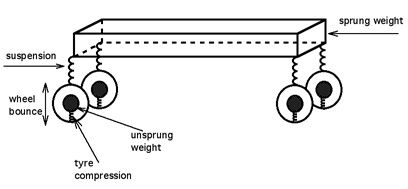Device Twins and Car Suspension: find 10 similarities

At first glance, what could possibly be common between such disparate things: levers, bearings, hubs, and a virtual entity in the cloud? Let's investigate.
The car wheel is the main element connecting it to the physical reality around it (we will exclude accidents and traffic police from our consideration). Likewise, Internet of Things (IoT) devices connect the digital realm to the physical world, which is why such systems are sometimes called cyber-physical. Just as a cantilever of an atomic force microscope scans the nanoworld, a car wheel scans the road landscape. What does the suspension do in this case? It helps the wheel do its job as effectively as possible.
The automotive industry is continually striving to reduce the unsprung weight: everything that oscillates with the wheel should be as light as possible. That way, it's easier for the wheel to cope with roughness, the engine/brake to accelerate/decelerate, and the steering mechanism to change direction. The weight of what's attached to the body is not so important. All of this is the suspension, which connects the wheel to the rest of the car.

This is analogous to the pursuit in the IoT realm, and especially in LPWAN, to "lighten" the device, transferring much of the data processing and management to the platform or server. This is done to conserve the device's resources, increase its energy efficiency, and extend its battery life. This is where Device Twins come into play (more about this approach here, here and here).
Now let's look at this issue from another angle: how Device Twins can be used in suspension. If multiple vibration sensors are installed on the wheel and suspension elements, a wealth of data can be gathered. A suspension Device Twin could monitor parameters like shock absorber wear, the condition of springs, stabilizers, bearings, and other suspension elements. The incoming signals must be processed to identify dangerous vibrations. All of this can be done by a suspension Device Twin working on the car's onboard computer. This information can then be used for predictive maintenance, forecasting, and preventing potential issues. These data can further be integrated into the car's Digital Twin for a more comprehensive and accurate view of its current state and maintenance needs.
A frequently asked question is "Why do we need these Device Twins, isn't it just creating more entities?". Now there's an answer: "Do you have suspension on your car? Why do you need it? You should rigidly attach the wheels to the body, as there's always something breaking in the suspension."
